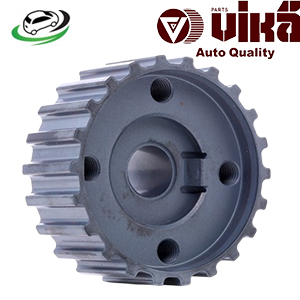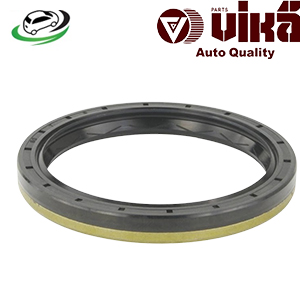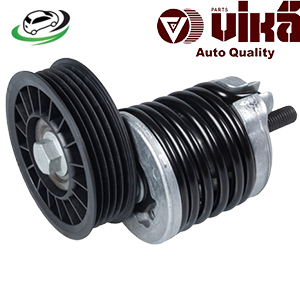-2%
Get AUDI A4 B5 1.9D Belt Tensioner 028903315M
The belt tensioner is a critical component in automotive engines, ensuring the proper tension of belts that drive various accessories, such as the alternator, power steering pump, water pump, and air conditioning compressor. By maintaining the correct tension, the belt tensioner prevents slippage, reduces wear, and enhances the overall efficiency of the engine. In this detailed overview, we will explore the functions, types, design, maintenance, and importance of belt tensioners in automotive applications.
2. Function of the Belt Tensioner
The primary functions of a belt tensioner include:
- Maintaining Proper Belt Tension: The tensioner is designed to keep the serpentine belt or timing belt at the optimal tension, ensuring efficient power transfer from the engine to the driven accessories. Proper tension prevents the belt from slipping or wearing out prematurely.
- Compensating for Wear and Stretch: Over time, belts can stretch or wear due to friction and heat. The tensioner adjusts automatically to compensate for this wear, ensuring that the belt remains tight enough to function effectively.
- Reducing Noise and Vibration: A well-functioning tensioner minimizes belt noise and vibrations, contributing to a smoother and quieter engine operation.
- Facilitating Easy Belt Replacement: In some designs, the tensioner can be released easily to allow for quick belt replacement, making maintenance more convenient.
3. Types of Belt Tensioners
Belt tensioners come in several types, each suited for specific applications and designs:
- Spring-Loaded Tensioners: This is the most common type of tensioner, utilizing a spring mechanism to apply tension to the belt. As the belt stretches or wears, the spring allows the tensioner to move, maintaining proper tension.
- Hydraulic Tensioners: Hydraulic tensioners use engine oil pressure to maintain belt tension. They are more complex than spring-loaded tensioners and provide precise tensioning, making them suitable for high-performance applications.
- Manual Tensioners: In some older vehicles, manual tensioners require the driver or technician to adjust the tension manually. These tensioners are less common in modern engines due to the convenience of automatic tensioners.
- Automatic Tensioners: These tensioners use a combination of springs and hydraulic mechanisms to automatically adjust tension as needed. They provide reliable performance and reduce the need for manual adjustments.
4. Design and Construction of Belt Tensioners
The design and construction of belt tensioners are vital for their effective operation. Key components include:
- Tensioner Arm: The tensioner arm is the movable part of the tensioner that applies force to the belt. It is usually made from durable materials such as steel or reinforced plastic.
- Spring Mechanism: In spring-loaded tensioners, the spring provides the necessary force to maintain tension on the belt. The spring’s tension can be adjusted to suit specific applications.
- Pivot Point: The tensioner arm pivots around a central point, allowing it to move freely as the belt stretches or wears. This pivot point must be designed for durability and minimal friction.
- Mounting Bracket: The tensioner is mounted to the engine using a bracket, which secures it in place and provides stability during operation. Proper alignment is crucial to ensure effective tensioning.
- Belt Guide: Many tensioners include a guide or pulley that helps keep the belt aligned, preventing it from slipping off during operation.
- Lubrication Points: For hydraulic tensioners, lubrication points may be present to ensure proper functioning and longevity.
5. Importance of Belt Tensioners
Belt tensioners play a vital role in the overall performance and longevity of automotive engines for several reasons:
- Optimal Performance: Maintaining the correct tension on the belt ensures efficient power transfer from the engine to accessories, contributing to overall vehicle performance. A loose belt can lead to inadequate charging, poor steering response, and overheating.
- Component Protection: Proper tension prevents excessive wear on the belt and driven components. Over time, a worn or loose belt can cause damage to the alternator, water pump, and other accessories, leading to costly repairs.
- Fuel Efficiency: An engine operating with a properly tensioned belt can perform more efficiently, improving fuel economy. Conversely, a slipping belt can lead to increased fuel consumption.
- Reduced Emissions: Efficient operation of engine accessories helps minimize emissions. A failing belt tensioner can contribute to increased emissions due to improper functioning of the engine components.
- Enhanced Longevity: Regular maintenance of the belt tensioner can extend the life of the serpentine or timing belt, reducing the frequency of replacements and saving on maintenance costs.
- Noise Reduction: A functioning belt tensioner minimizes noise and vibrations associated with belt operation, leading to a quieter cabin experience.
6. Signs of a Failing Belt Tensioner
Identifying a failing belt tensioner is crucial to prevent further engine damage. Common signs include:
- Squealing or Chirping Noises: A worn or failing tensioner can lead to belt slippage, causing squealing or chirping noises, especially during acceleration or when the engine is cold.
- Belt Wear or Cracking: Visual inspection may reveal signs of excessive wear or cracking on the belt, which can indicate that the tensioner is not maintaining proper tension.
- Engine Overheating: If the tensioner fails, it may cause the water pump to operate inefficiently, leading to engine overheating.
- Power Steering Issues: A slipping belt can reduce the effectiveness of the power steering pump, resulting in difficulty steering the vehicle.
- Check Engine Light: The illumination of the check engine light can indicate belt tension issues. Diagnostic codes may provide insight into the underlying problem.
- Vibration in the Engine Compartment: Excessive vibration in the engine compartment may signal a failing tensioner or misaligned belt.
7. Maintenance of Belt Tensioners
Proper maintenance is essential to ensure the longevity and performance of belt tensioners. Key maintenance tips include:
- Regular Inspections: Periodically inspect the tensioner, belt, and associated components for signs of wear or damage. Early detection can prevent costly repairs.
- Belt Replacement: Follow the manufacturer’s recommendations for belt replacement intervals. A worn belt can lead to tensioner failure and reduced performance.
- Lubrication: For hydraulic tensioners, ensure that lubrication points are maintained according to the manufacturer’s specifications to prevent premature wear.
- Listen for Noises: Pay attention to any unusual noises coming from the engine area, especially when the engine is idling or under load.
- Check Alignment: Ensure that the belt is properly aligned and that the tensioner is securely mounted. Misalignment can cause excessive wear on the belt and tensioner.
- Professional Inspection: If you suspect tensioner issues, seek professional inspection and diagnostics. A qualified mechanic can identify and resolve any problems effectively.
8. Replacing a Belt Tensioner
Replacing a belt tensioner is a straightforward process for those with mechanical skills. Here are general steps for replacement:
- Gather Tools and Supplies: Before starting, gather necessary tools, including wrenches, sockets, a torque wrench, and a replacement tensioner. Ensure the vehicle is parked on a level surface.
- Disconnect the Battery: Safety is essential. Disconnect the negative terminal of the battery to prevent electrical shorts during the replacement process.
- Remove Engine Covers: If applicable, remove any engine covers that obstruct access to the tensioner. This may involve removing bolts and clips.
- Release Tension on the Belt: Use a tensioner tool or a ratchet to relieve tension on the belt. Carefully remove the belt from the tensioner pulley.
- Remove the Tensioner: Unbolt the old tensioner from the engine using the appropriate socket. Carefully remove the tensioner from its mounting location.
- Install the New Tensioner: Position the new tensioner onto the engine and secure it with mounting bolts. Follow the manufacturer’s torque specifications for proper installation.
- Reinstall the Belt: Reinstall the serpentine belt, ensuring it is properly routed around all pulleys according to the belt routing diagram. Use the tensioner tool to apply tension and secure the belt.
- Reinstall Engine Covers: Once everything is in place, reinstall any engine covers and secure them with bolts or clips.
- Reconnect the Battery: Once everything is back in place, reconnect the battery and start the engine. Check for any unusual noises or warning lights.
- Monitor Operation: After installation, monitor the engine for proper operation. Ensure that the belt operates smoothly and quietly.
9. Conclusion
The belt tensioner is an essential component of automotive engines, playing a vital role in maintaining proper belt tension for optimal performance and efficiency. By ensuring the correct tension on serpentine or timing belts, the tensioner contributes to the reliable operation of various engine accessories, enhances fuel efficiency, and minimizes wear on components.
Understanding the function, design, and importance of belt tensioners enables vehicle owners and technicians to ensure their engines operate at peak efficiency, contributing to a safe and enjoyable driving experience. Regular maintenance and timely replacement of belt tensioners can help prevent issues that lead to engine damage and costly repairs. In summary, the belt tensioner is a crucial part of the engine’s accessory drive system, playing an integral role in the overall performance and longevity of the engine.
Follow us on Facebook for more parts.




Reviews
Clear filtersThere are no reviews yet.